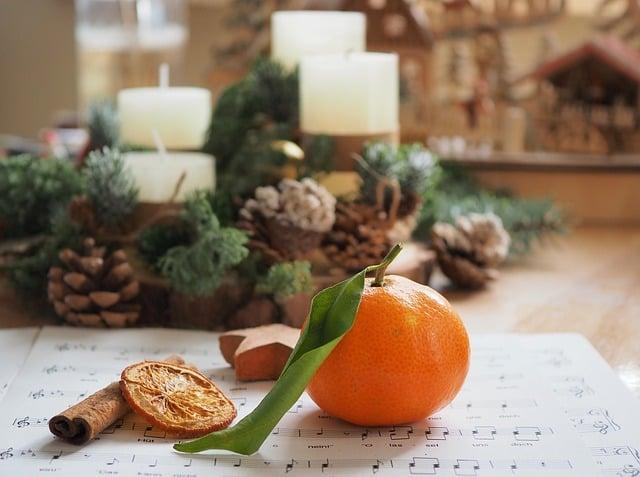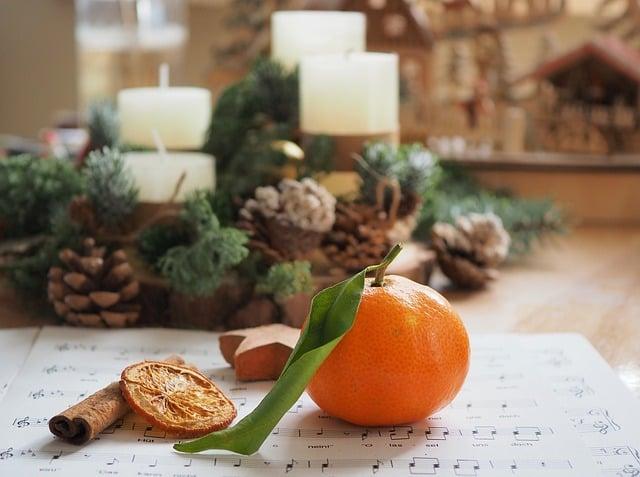As the first candle flickered to life on the Advent wreath, Clara felt a mix of excitement and confusion. “Does Advent mean Christmas?” she pondered, watching her family gather around. Her grandmother smiled, sensing her curiosity. “Advent is the journey, dear. It’s a time of waiting and preparation, not the celebration itself.” Clara nodded, understanding that each week brought a new lesson, a new light. As the days passed, she realized that Advent was not just a countdown to Christmas, but a beautiful reminder of hope and anticipation.
Table of Contents
- Understanding the Significance of Advent in the Christian Calendar
- Exploring the Distinct Roles of Advent and Christmas Celebrations
- Embracing the Spirit of Preparation: How Advent Enriches the Christmas Experience
- Practical Ways to Observe Advent and Enhance Your Holiday Traditions
- Q&A

Understanding the Significance of Advent in the Christian Calendar
Advent serves as a profound period of anticipation and preparation within the Christian calendar, marking the beginning of the liturgical year. It is a time when believers reflect on the significance of Christ’s coming, both in the historical context of His birth and in the future promise of His return. This season, lasting four weeks, invites the faithful to engage in practices that deepen their spiritual lives, such as prayer, fasting, and acts of charity. The use of Advent calendars and wreaths symbolizes the countdown to Christmas, creating a tangible connection to the sacredness of the season.
While Advent culminates in the joyous celebration of Christmas, it is essential to recognize that it is not merely a prelude to the holiday. Instead, it emphasizes themes of hope, peace, joy, and love, which are foundational to the Christian faith. During this time, congregations often focus on scripture readings that highlight the prophetic messages surrounding the Messiah’s arrival. By embracing the spirit of Advent, Christians are encouraged to cultivate a heart of expectation and gratitude, allowing the significance of Christ’s birth to resonate deeply within their lives.

Exploring the Distinct Roles of Advent and Christmas Celebrations
As the calendar turns towards December, the anticipation of Christmas begins to fill the air, yet it is essential to recognize that this festive season is preceded by a period rich in meaning and reflection. Advent, a time of preparation, invites individuals to pause and contemplate the significance of the upcoming celebration. This season is characterized by **hope**, **joy**, and **expectation**, as it marks the four weeks leading up to Christmas Day. During Advent, many engage in traditions such as lighting candles on an Advent wreath, each representing a different theme, including peace, love, joy, and hope. This ritual serves as a reminder to focus on the spiritual journey leading to the birth of Christ, rather than merely the commercial aspects of the holiday.
In contrast, Christmas is a jubilant celebration that commemorates the birth of Jesus Christ, filled with joy, family gatherings, and festive traditions. It is a time when the themes of Advent culminate in a grand celebration of love and generosity. The distinct roles of these two seasons can be highlighted through various practices, such as:
- Advent Calendars: Used to count down the days until Christmas, often with a focus on daily reflections or acts of kindness.
- Christmas Carols: Joyful songs that celebrate the birth of Christ, often sung during gatherings and church services.
- Gift Giving: A tradition that symbolizes the gifts brought to Jesus by the Magi, emphasizing the spirit of generosity.
While Advent sets the stage for the celebration of Christmas, each season holds its unique significance, inviting individuals to engage in both reflection and celebration in their own meaningful ways.

Embracing the Spirit of Preparation: How Advent Enriches the Christmas Experience
As the days grow shorter and the air turns crisp, the season of Advent invites us to pause and reflect. This sacred time, often overlooked in the hustle and bustle of holiday preparations, serves as a gentle reminder to prepare our hearts and minds for the joy of Christmas. Embracing this spirit of anticipation allows us to cultivate a deeper appreciation for the significance of the holiday. Through practices such as lighting candles, engaging in daily reflections, and participating in community gatherings, we can create a rich tapestry of experiences that enhance our understanding of the season.
Advent encourages us to slow down and savor the moments leading up to Christmas, transforming our approach to the festivities. By focusing on themes of hope, peace, joy, and love, we can enrich our celebrations in meaningful ways. Consider incorporating the following into your Advent journey:
- Daily Devotions: Set aside time each day for prayer and reflection.
- Acts of Kindness: Engage in charitable activities that spread goodwill.
- Family Traditions: Create rituals that bring loved ones together.
- Mindful Decorations: Choose ornaments and decorations that hold personal significance.
By embracing these practices, we not only prepare for the arrival of Christmas but also deepen our connection to its true meaning, allowing the spirit of Advent to enrich our holiday experience in profound ways.

Practical Ways to Observe Advent and Enhance Your Holiday Traditions
Embracing the spirit of Advent can transform your holiday season into a time of reflection and joy. One practical way to observe this period is by creating an **Advent calendar** filled with meaningful activities or scriptures. Each day, open a new door to reveal a small act of kindness, a family prayer, or a moment of gratitude. This not only builds anticipation for Christmas but also encourages a deeper connection with the values of the season. Consider incorporating **family traditions** such as lighting a candle each week, symbolizing hope, peace, joy, and love, which can serve as a beautiful reminder of the true essence of Advent.
Another enriching approach is to dedicate time for **service and giving** during this season. Organize a family volunteer day where you can help at a local shelter or participate in a community food drive. This act of giving not only enhances your holiday traditions but also instills a sense of purpose and community spirit. Additionally, you might explore **themed family nights** that focus on different aspects of Advent, such as storytelling, crafting, or baking traditional holiday treats. These activities can create lasting memories while reinforcing the significance of the season, making the countdown to Christmas a time of joy and togetherness.
Q&A
-
What is Advent?
Advent is a season in the Christian calendar that marks the anticipation of Christmas. It begins four Sundays before Christmas Day and lasts until Christmas Eve, focusing on preparation and reflection.
-
Does Advent directly mean Christmas?
No, Advent does not mean Christmas. Instead, it is a preparatory period leading up to the celebration of Christmas, emphasizing themes of hope, joy, and expectation.
-
How long does Advent last?
Advent lasts for four weeks, starting on the Sunday closest to November 30 (St. Andrew’s Day) and concluding on December 24, Christmas Eve.
-
What are common Advent traditions?
- Lighting Advent candles on a wreath.
- Using Advent calendars to count down the days until Christmas.
- Participating in special church services and prayers.
As we journey through Advent, we embrace the anticipation of Christmas, a time of reflection and hope. While Advent prepares our hearts, it is the spirit of Christmas that ultimately brings joy and unity, reminding us of the light that follows the waiting.




